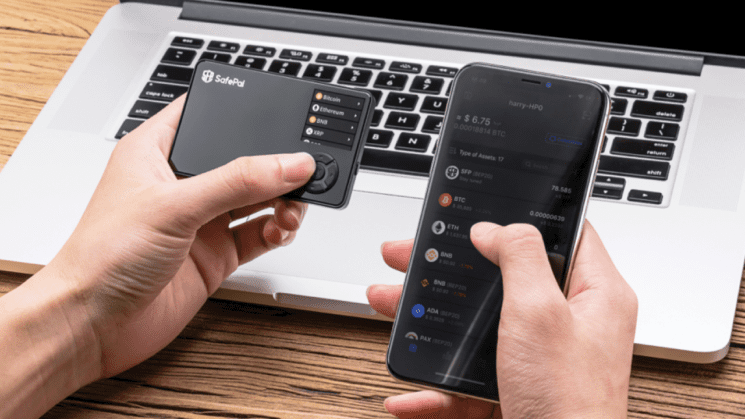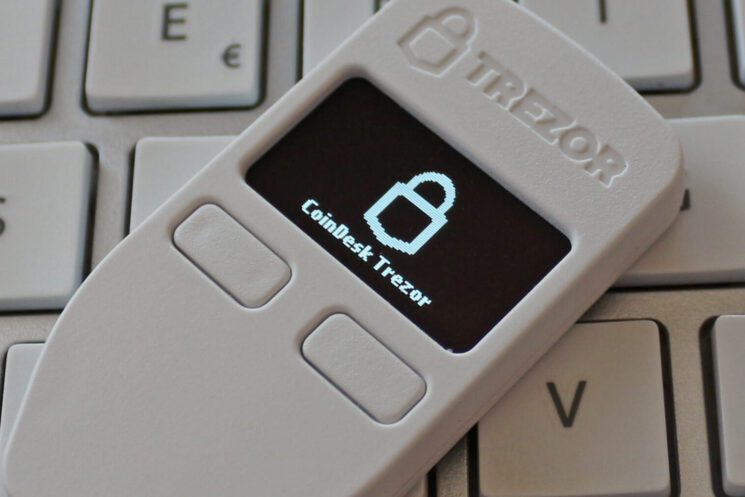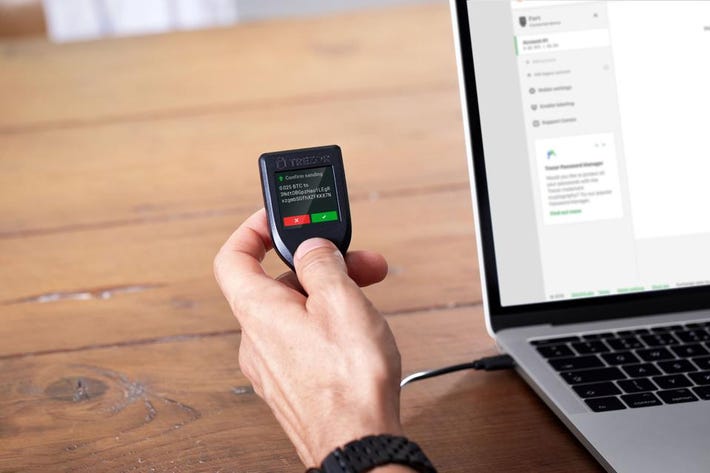Despite the fact that in the last couple of years there have been occasional fluctuations in their price, digital currencies will continue to be a good option as an investment or store of value in the long term. A lot of people are aware of this, and keep on continuing their crypto activity regardless of future forecasts not being so bright, at times. Because of this, the tools involved in its exchange and storage are increasingly targeted by computer criminals. Therefore, before starting your investment journey, it is important to know what hardware wallets are and how they work.
As mentioned in the title, in this article we’re going to discuss Trezor One vs Model T, but before we do that, there are some basic things we need to be clear about.
In This Post
What are wallets?

Although the term wallet refers to an object we usually keep our money in, in this case, wallets are not actually containers of value. It’s simpler to explain the term by comparing them to a debit or credit card that we insert into an ATM. Each of us has one that functions only if you know a pin number, which allows you to access it, and it shows that we have the right to access these stored values.
As there is no money, at least not the same as we are used to, these wallets store private keys. That is, codes that show the network that manages coins that we are the owners of a certain amount of those coins, as well as to whom the transactions made should be attributed.
To put it in simple words, whoever has access to a particular private key will have control over all cryptocurrencies related to it.
There are different types of wallets

We can distinguish between two types of virtual wallets, hardware, and software. The latter can be enabled through an exchange service or installed on the user’s device. As the name suggests, the key difference between the two types is that hardware ones are single-use devices, while software ones are installed on multi-purpose devices such as a computer or smartphones.
Let’s expand the concept a little further:
Software wallets:
Stored on an all-in-one device, they require no special hardware to function. This makes their cost more affordable or in many cases, they can be obtained for free. As a disadvantage, we can mention that they are susceptible to computer attacks.
Hardware wallets:
A physical device intended to store private keys. Since you only need to connect to the Internet to make transactions, your exposure to computer attacks is reduced. Having hardware components, its price is slightly higher.
Naturally, with crypto being so popular today, one can choose from so many different versions of hardware wallets. Since we’re talking about Trezor ones, it’s important to know that both models have managed to keep their places in the top five!
But, as we promised, we’re going to analyze it for you to decide on which one to use.
As you already know, both are products of the same company, SatoshiLabs, and it was made for storing Bitcoins. This is what they have in common, obviously. Read below about their features.
Trezor One

This model was the first one to be placed on the market by the earlier-mentioned company, therefore will always have a special place in history. It was released back in 2014, and for that reason offers a set of basic features, that were needed back then. However, this doesn’t mean that it is outdated, and people still find it very useful and safe. Which is the reason behind the product still being on the market, and among the top 5!
Here’s what the users had to say about its pros and cons…
Pros
- Easy to use
- One can store more than a thousand coins on it
Cons
- Doesn’t have the features modern ones do
- Small screen
Model T

It’s kind of logical to assume that this model has all the advantages of the first one, but with modern features, people search for it now. Some may say that the difference is not that huge, between them two and that the only one is in the screen size, which makes it a lot easier to handle, as actions one wants to take are performed faster.
Pros
- Larger screen makes handling easier
- Passphrase can be entered directly via screen
- It’s a Trezor One with more features
- One can store more than a thousand coins on it
Cons
- Price – a lot more expensive than the previous model
- Durable feel is absent
All in all, when you’re deciding upon which model to use, the criteria based on which you should choose is how beginner-friendly it is. Especially if you’re new in the crypto world. This is important because you want to keep the interaction with your assets as simple as possible, to minimize the risk of a mistake. Once the assets are loose, there’s no way you can return them. Therefore, as you could read above, the first model has a somewhat smaller screen, making it tricky to interact with the device. Whereas the second one has made the experience a lot easier.
Simplicity doesn’t only involve a touchscreen. It also refers to having fewer options, so you’re not confused. If you look at things from this perspective, then the first model is a lot easier to handle. And if it is the price that plays a huge role in your selection, then it’s also a lot cheaper than the second model, as you could see in the pros and cons we stated for both.
Finally, one should never be too afraid of devices that offer more functions, because this is a market that evolves super fast. If you’re dipping your toes in it might as well go all the way and learn everything there is to know, to make sure you get the most out of it.